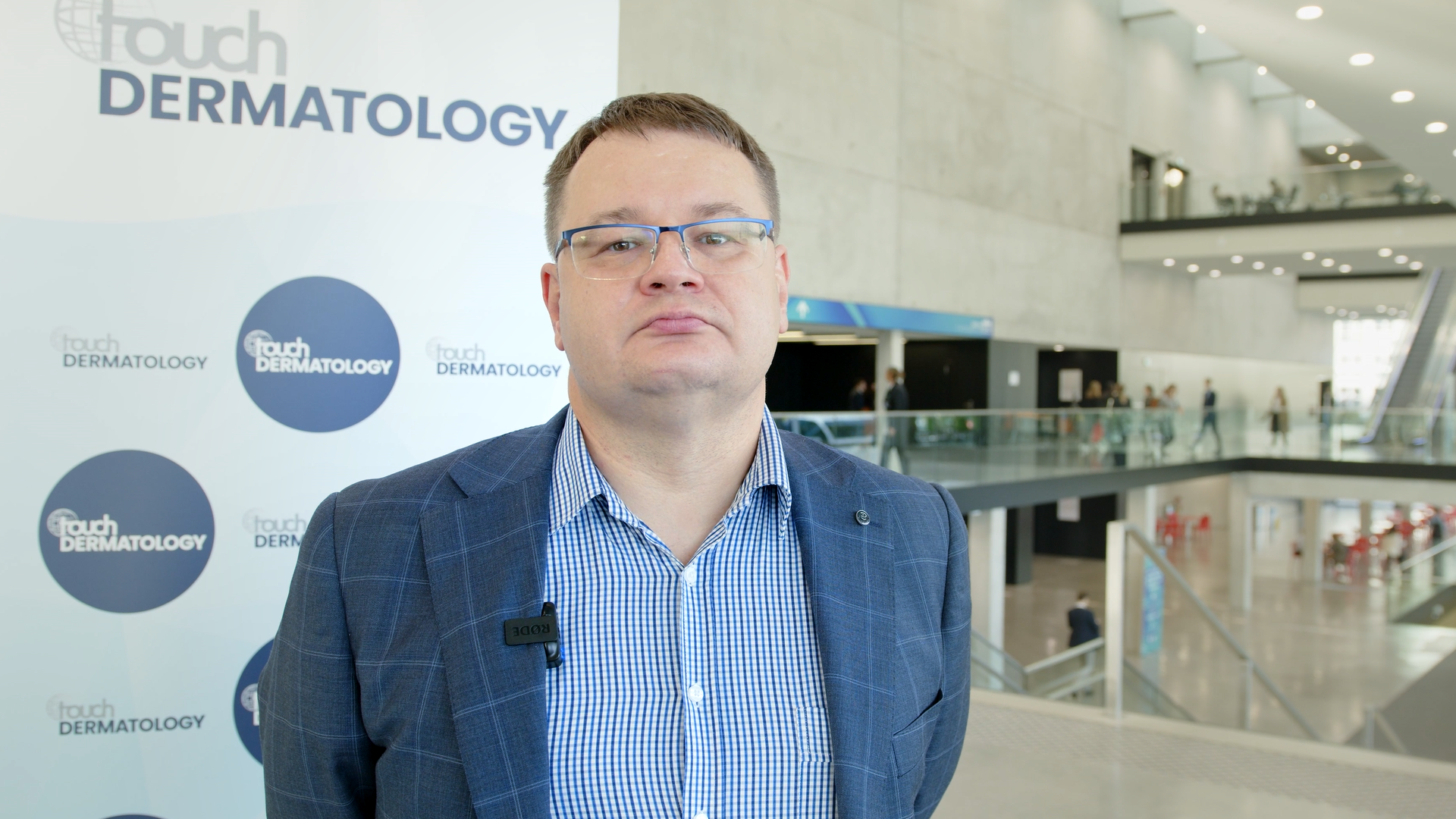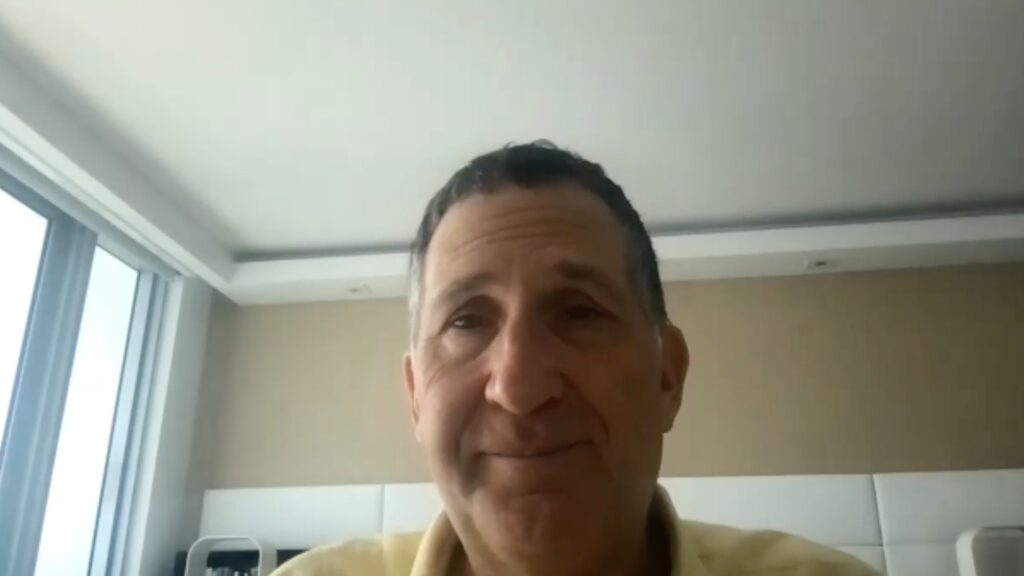Touch Medical Media coverage of data presented at EADV 2023:
Atopic dermatitis and prurigo nodularis are type 2 inflammatory skin diseases with intense pruritis. Both share mechanisms of disease, including inflammation with the role of type 2 cytokines in driving itch. We were delighted to speak to Expert Faculty member Dr. Raj Chovatiya (Northwestern University Feinberg School of Medicine, Chicago, IL, USA) to discuss the burden of itch and its impact on quality of life, dupilumab’s recent approval and its impact on the treatment landscape.
Questions
- Could you describe the burden of itch and the impact this has on patient quality of life? (0:17)
- What impact has the approval of dupilumab had on the treatment paradigm for pruritic diseases? (0:56)
- How do atopic dermatitis (AD) and prurigo nodularis (PN) differ in presentation, despite sharing a similar pathology? (1:29)
- Aside from relieving itch, what other benefits are associated with targeting IL-4 and IL-13 signalling in AD and PN? (2:13)
- What are the next steps to achieving disease control in inflammatory skin diseases? (2:42)
Disclosures: Raj Chovatiya discloses advising, consulting, and/or speaking for AbbVie, Apogee Therapeutics, Arcutis, Argenx, ASLAN Pharmaceuticals, Beiersdorf, Boehringer Ingelheim, Bristol Myers Squibb, Cara Therapeutics, Dermavant, Eli Lilly and Company, FIDE, Galderma, Genentech, GSK, Incyte, Janssen, LEO Pharma, L’Oréal, Nektar Therapeutics, Opsidio, Pfizer Inc., Regeneron, RAPT, Sanofi, and UCB.
Support: Interview and filming supported by Touch Medical Media Ltd. Interview conducted by Victoria Jones and Katey Gabrysch.
Filmed in coverage of the EADV Annual Meeting.
This content was developed by Touch Medical Media and is not affiliated with the European Academy of Dermatology & Venereology (EADV) or the congress.
Click here for more content on dermatitis and prurigo nodularis & for further EADV 2023 highlights visit here.
Transcript
Could you describe the burden of itch and the impact this has on patient quality of life? (0:17)
So itch is one of the pervasive symptoms in dermatology that exists across diseases and what we’ve kind of learned from diseases where itch is pretty common, like atopic dermatitis or prurigo nodularis, or even diseases where itch is actually more common than we think it is, like psoriasis, it is a huge mediator of a lot of different types of burden for patients. So whether it’s sleep, mental health considerations, even overall quality of life, the fact that patients fixate on such an annoying symptom get caught in this itch scratch cycle drives a lot of the burden we think about in pruritic diseases.
What impact has the approval of dupilumab had on the treatment paradigm for pruritic diseases? (0:56)
We think about sort of a pre-dupilumab and post dupilumab time for a lot of our pruritic diseases like atopic dermatitis, prurigo nodularis, and others, and essentially went from having no options to actually having a targeted option that goes at one of the root causes of not only pruritus, but inflammation in these diseases as well. And so I would say game changing, and I don’t use that word lightly just because we’ve been able to treat so many more patients across so many ages than we really ever were able to before.
How do atopic dermatitis (AD) and prurigo nodularis (PN) differ in presentation, despite sharing a similar pathology? (1:29)
You know, we know that atopic dermatitis and prurigo nodularis, both are considered type 2 inflammatory diseases, just given the dysregulation at the core of both. However, there are some key differences, while itch is very common between both, we oftentimes think about neuroinflammation as being very key as itch is a central part of PN, whereas, a lot of barrier disruption is one of the more important parts of atopic dermatitis.
Beyond that, there’s obviously some more subtle differences in clinical presentation with atopic dermatitis typically, we think about patches, plaques, papules, where the case of prurigo nodularis, it’s usually chronic itch plus palpable, pruriginous nodules.
Aside from relieving itch, what other benefits are associated with targeting IL-4 and IL-13 signalling in AD and PN? (2:13)
Dupliumab obviously helps patients in terms of their itch symptoms, but it improves signs of disease in terms of overall lesion counts and PN. Overall markers of severity in atopic dermatitis, we know that it has effects on other symptoms in terms of sleep improvement, mental health considerations, or even quality of life scores. Really this entire package of signs, symptoms, and quality of life across both diseases.
What are the next steps to achieving disease control in inflammatory skin diseases? (2:42)
Dupilumab was just the start, and we’re really starting to hone in on some other immunologic mechanisms that are probably relevant in type 2 inflammation. So, obviously, there’s been some more work into IL-13, there’s more work into IL-31. There’s been, of course, work into other signaling pathways that JAK-STAT for one example and so I think these are all further spelling out the story of what itch and type 2 inflammation means to our patients diseases, and I think that we’re just gonna have more and more tools, and we’re really gonna be able to target the right therapy for the right patient, hopefully, one day.
Subtitles and transcript are autogenerated.



